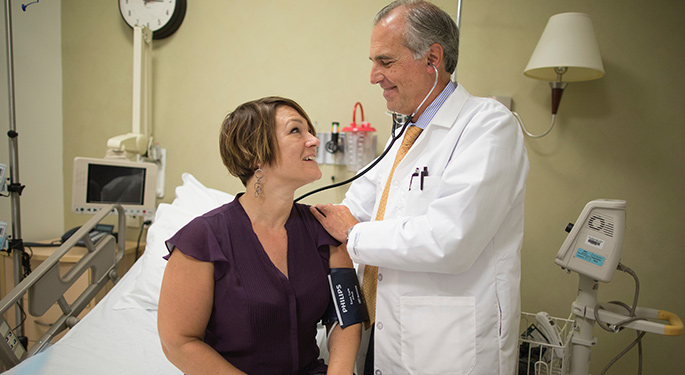Bone Marrow and Stem Cell Transplantation Program

Cancers of the blood or lymph system are known as hematological malignancies. One approach used to treat these cancers is a bone marrow transplant. It can help when other approaches have not. Mount Sinai’s Bone Marrow Transplantation Program is at the forefront in treating hematological malignancies with bone marrow transplants.
What Is a Bone Marrow Transplant?
Bone marrow is the soft spongy tissue in the middle of most bones. It produces stem cells. Stem cells are unspecialized cells that divide into specialized cells such as red blood cells, white blood cells, and platelets. Stem cells are part of the immune system, which helps protect the body from viruses and bacteria. When transplanted into patients, stem cells repair and replace damaged tissues.
Bone marrow transplant can successfully treat a variety of cancers and other conditions that are resistant to other forms of treatment. Your doctor will determine if a bone marrow transplant will benefit you, and if so, which type of transplant will be most effective in treating your condition.
If you need a bone marrow transplant, you want the most compassionate and effective care. Mount Sinai’s Bone Marrow Transplant Program can help. We are experts at performing these procedures.
Types of Bone Marrow Transplant
Our Mount Sinai bone marrow transplant specialists perform three types of bone marrow transplant. They use different sources of stem cells. The type you receive depends on your condition.
- Autologous transplant: An autologous transplant uses your own stem cells. This is possible if your disease does not affect your bone marrow.
- Allogeneic transplant: An allogeneic transplant uses stem cells collected from another adult. The donor may be your brother or sister or someone who is not related to you, identified through a donor registry.
- Cord transplant: A cord transplant uses stem cells from the umbilical cord blood of a newborn.
Patients who need an allogeneic transplant typically have cancer cells that have invaded their bone marrow or disease that has caused the bone marrow to stop working properly. For patients undergoing allogeneic transplant, we offer innovative and effective approaches, including:
- Haplomismatched transplant: A haplomismatched allogeneic transplant uses a donor that is not an exact match.
- Non-myeloablative transplant: A non-myeloablative transplant uses lower doses of chemotherapy and radiation for fragile patients. It is considered a “mini transplant.”
- Donor leukocyte infusion: This approach uses a donor’s white blood cells to maintain remission.
Bone Marrow Transplant Procedure
The first step in the bone marrow transplant procedure is often chemotherapy and sometimes radiation. This rids your body of cancer cells. Next, we inject the stem cells directly into your blood using a process similar to a blood transfusion. The stem cells travel to your bone marrow. The ideal result is for the undifferentiated stem cells to rescue your bone marrow as they mature and divide in your bone marrow.
Learn more about bone marrow transplants.
Donor Compatibility
If we use an allogeneic or cord transplant, we need to be sure the cells from the donor match yours. We evaluate donor-patient compatibility through a histocompatibility antigen test. This blood test analyzes human lymphocyte antigens found on the surface of white blood cells
Learn more about becoming a bone marrow donor.
Research and Clinical Trials
Our program’s doctors and researchers continually research and conduct clinical trials to find ways to improve quality of life for cancer patients.
